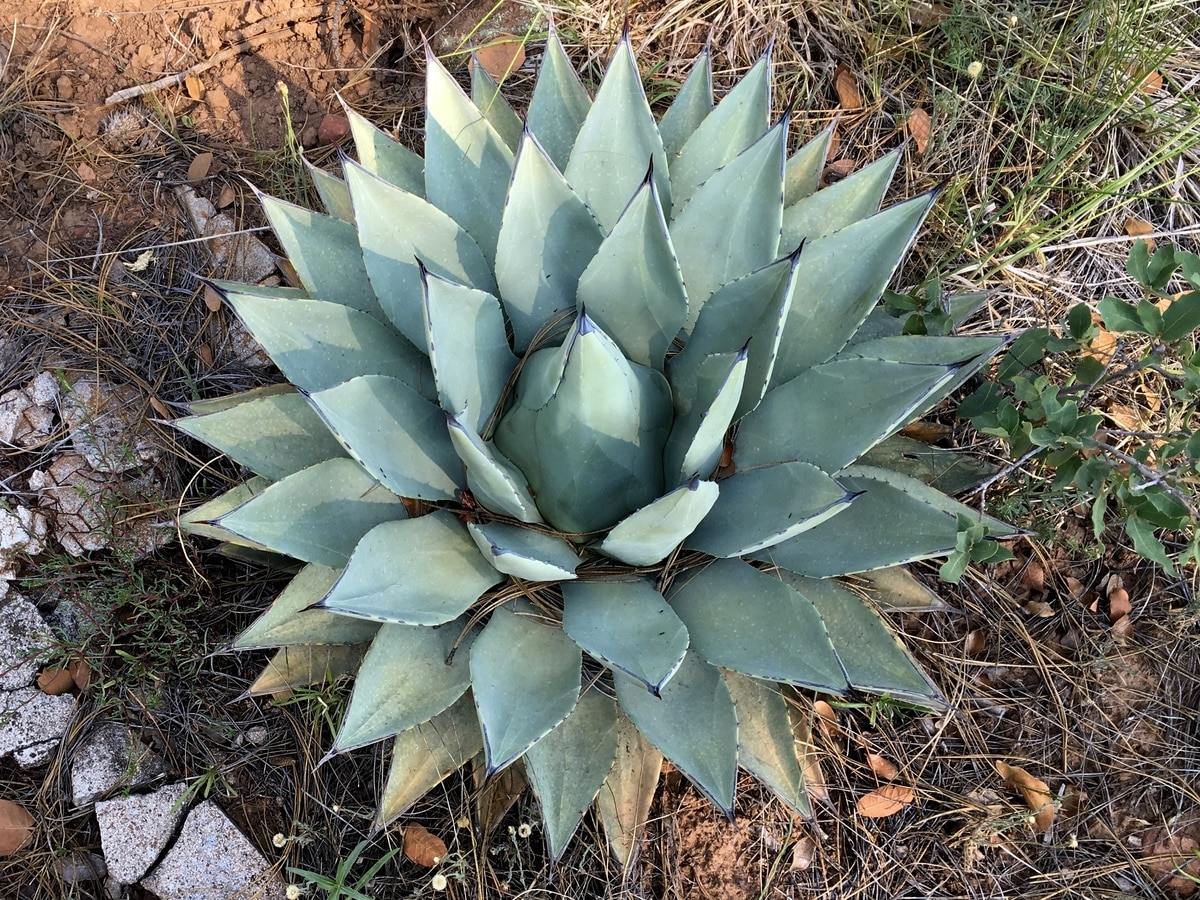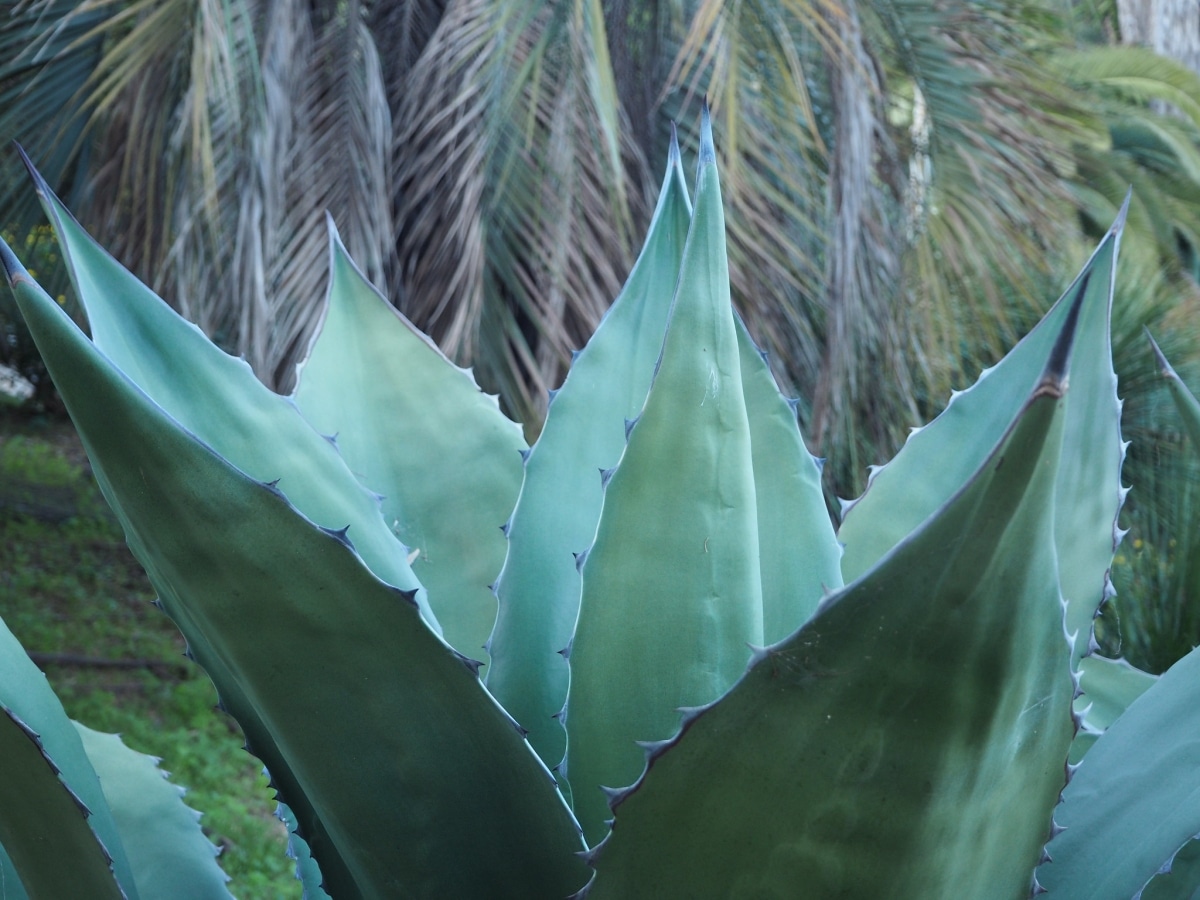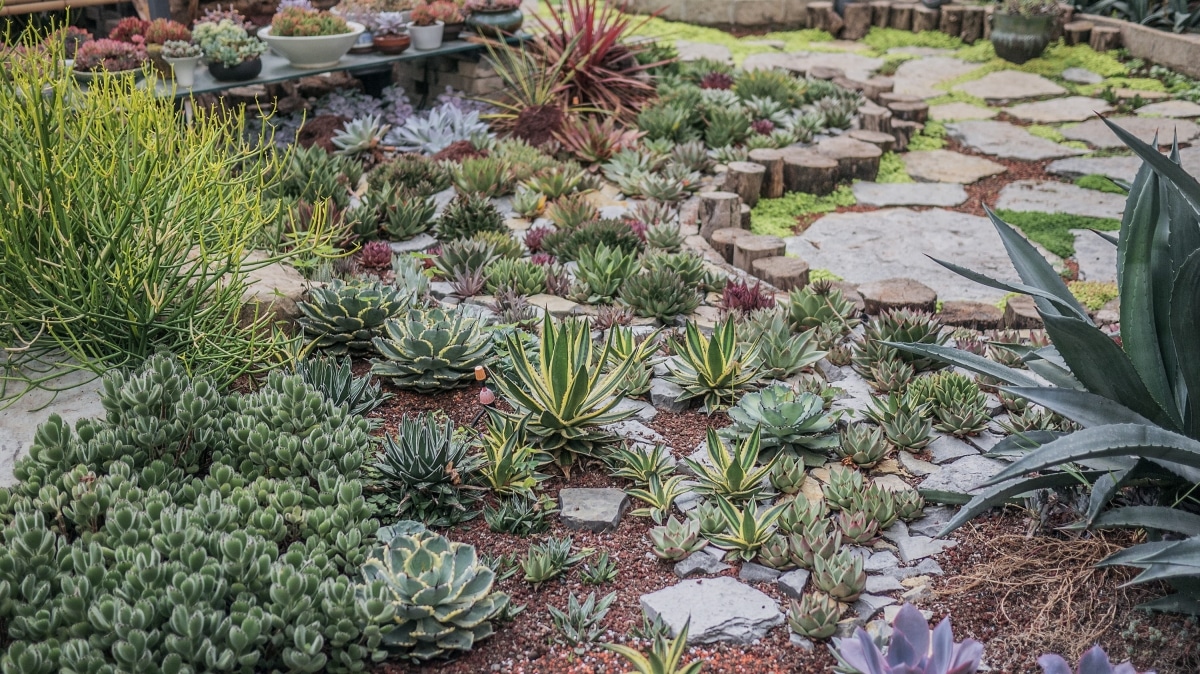
There is still a lot of confusion about what cacti, succulents and succulents are.. And when we think of those plants that sting, such as agaves, we usually immediately classify them as "cacti". And the fact that, in addition, in nurseries and garden stores they have them with the latter, does not help much.
And is that, how many people believe that agaves are cacti? We do not know, but I would dare to say that there are many. For this reason, i will talk about it.
Are agaves related to cacti?

Image - Flickr / Teresa Grau Ros
The answer is no. They do share a habitat with many of them, but beyond that, they have practically nothing in common. They are two totally different types of plants, which have developed adaptation and survival strategies that are also different, unique. That is why it is wrong to say that they are cacti just because most species have spines.
Moreover, not even the spines should be a feature to look at to know if a plant is a cactus or notBecause not all cacti have them, as is the case for example of Astrophytum asterias. And to further complicate matters, there are crassies that do have, such as Euphorbia Grandicornis.
How are cacti different from agaves?
Mainly on one thing: Cacti have areoles, agaves don't.. The areoles are those small protuberances through which the thorns (if they have them) and the flowers sprout. If we look closely, the spines of the agaves seem "welded" to the leaves, both at the tip and at the edges if they also have them; They do not sprout from an areola, but from the same blade that forms the leaf. But this is not the only difference, there are others such as:
- Cacti do not have conventional leaves. (except the pereskia); the vast majority of agaves "only" have leaves (apart from roots, of course; and some that develop a stem that allows them to grow taller, such as the agave sisalana).
- Agaves bloom once in their lives and then die.; Cacti, on the other hand, as soon as they do it for a year, we already know that they will continue doing it until they die.
- Continuing with the theme of flowering, agaves develop a very, very long flower stalk (several metres) with many flowers, which end up producing fruits with seeds. Cactus flowers are much smaller, and do not sprout from a stem, but from the plant itself.
- Agaves produce shoots during and/or shortly after flowering.; The cacti that have shoots have them throughout their lives, and not just during a specific period of time.
And although I have no proof, from my own experience growing both agaves and cacti, I would tell you that agaves resist drought much better than cacti. Where I live, in Mallorca, there can be a maximum of 38ºC and a minimum of 22ºC or more in summer, and also during that season it is normal for it not to rain at all.
Well, if you leave a cactus without watering, it is very likely that it will end up having a worse time than the agave. Although, as I say, I have no proof, the mere fact of seeing feral agaves in the field and not cacti, can already make us suspect that they can better withstand drought. For this reason, I recommend them more than cacti if you want to have a garden without irrigation or with low maintenance.
Are agaves succulents?

Before answering this question, let me first explain something that is important:
- Cacti are plants that have areoles on their bodies., which is where the flowers and sometimes the thorns sprout.
- The succulents do not have areoles., so his whole body is, shall we say, smooth when you touch him. You don't notice any strange bumps.
- Succulents are all those plants that use their body, or some part of it, as if it were a water reserve., such as cacti and succulents.
Starting from this base, agaves are herbaceous plants that are generally succulents, since they usually have thick and fleshy leaves (with few exceptions, such as the Agave attenuata which has them thinner). And it is this, the thickness of the foliage, which tells us if it is very resistant to drought, or not very resistant. For example, him Agave attenuata He has a bad time if he spends a long time without receiving a single drop of water; on the other hand the Agave victoria-reginae resist thirst better.
So, when taking care of it, we will have to try to water them only when necessary (that is, when the earth has dried), and plant them in a sunny place so that they grow well, without problems. So we can enjoy its beauty for several years.